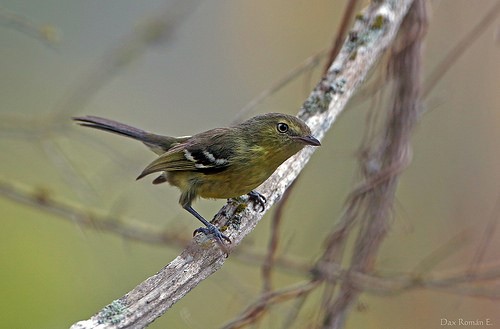Birdfinding.info ⇒ Reliably found at lower elevations of Zapotén Road around La Placa, along the Rabo de Gato Trail, and at lower elevations of Alcoa Road. Can also be found in dry forests near the major resort areas at Punta Cana and La Romana, including Del Este National Park.
Flat-billed Vireo
Vireo nanus
Endemic to Hispaniola and its satellite islands, where it is generally scarce but locally common in hot dry deciduous forests and semiarid scrub of Haiti and the Dominican Republic.
Known mainly from four disjunct areas: (1) northern coastal lowlands from around Port-de-Paix, Haiti, east to Los Haitises National Park; (2) Gonâve Island; (3) southeastern Haiti and the southwestern D.R.; and (4) the southeastern D.R. from La Romana to Punta Cana and, at least formerly, Saona Island. Occurs at least sporadically in pockets of appropriate habitat elsewhere, including the southwestern Haitian Peninsula.
Its center of abundance appears to be the southwestern D.R., in the foothills on both slopes of the Sierra de Bahoruco and Jaragua National Park.
Identification
A yellow-olive vireo with whitish wingbars, pearly eyes, a short, yellowish eyebrow, and yellow underparts that sometimes appear streaked. Immatures have dark eyes.
Peculiarly shaped, with a broad, flattened head and long tail, more like a flycatcher than a typical vireo.
Bill is also flycatcher-like: broad and flat at the base, or triangular when viewed from above. In side-view, the bill has an unusual down-turned gape.
Usually the only wing-barred vireo in its range, but the somewhat similar Thick-billed Vireo is a common resident on Haiti’s adjacent Île de la Tortue.
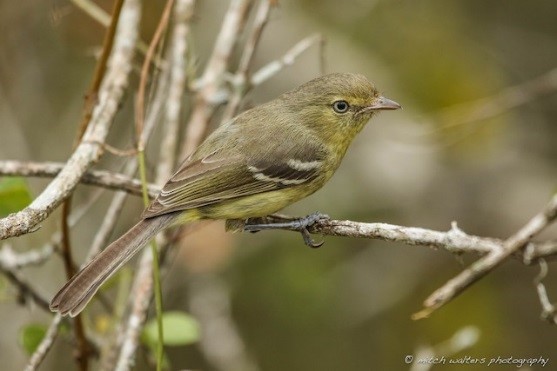
Flat-billed Vireo, showing the disproportionate length of its tail and its distinctive down-turned gape. (Rabo de Gato Trail, Dominican Republic; March 7, 2017.) © Mitch Walters
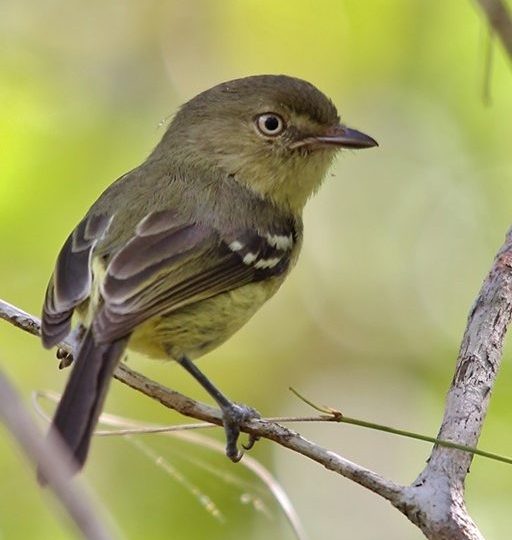
Flat-billed Vireo, giving the overall impression of a flycatcher. Note the down-turned gape. (Bayahibe, Dominican Republic; January 9, 2013.) © Adrian Braidotti
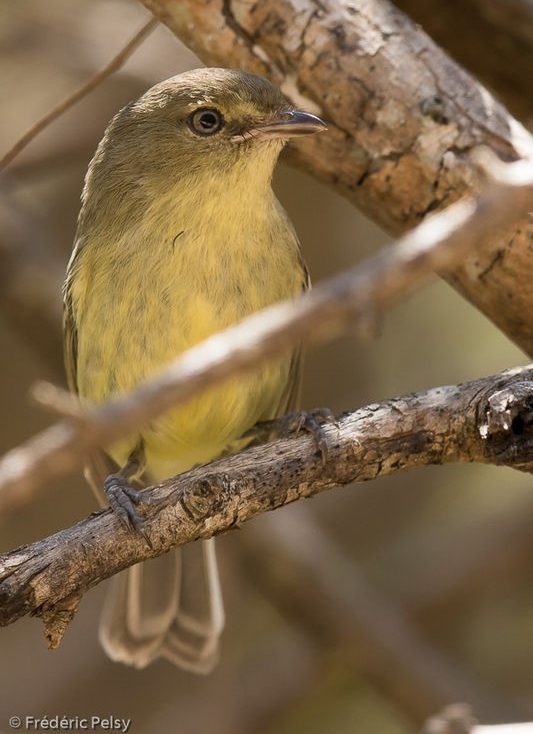
Flat-billed Vireo. Note the down-turned gape. (Puerto Escondido, Dominican Republic; March 29, 2017.) © Frédéric Pelsy
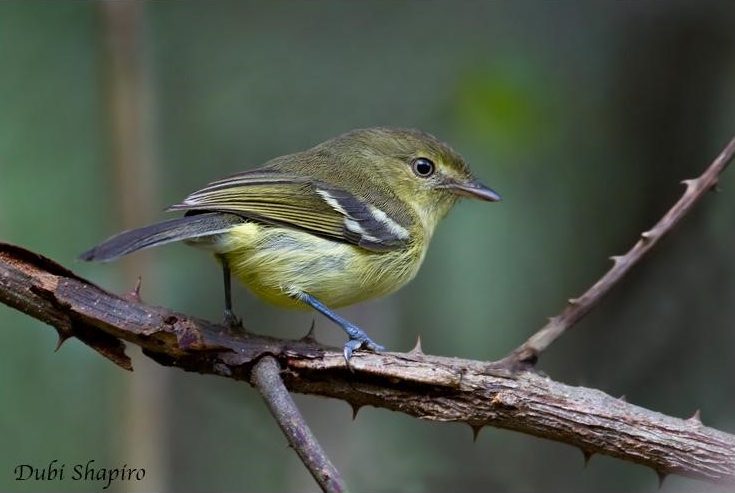
Flat-billed Vireo. (Sierra de Bahoruco, Dominican Republic; January 28, 2014.) © Dubi Shapiro
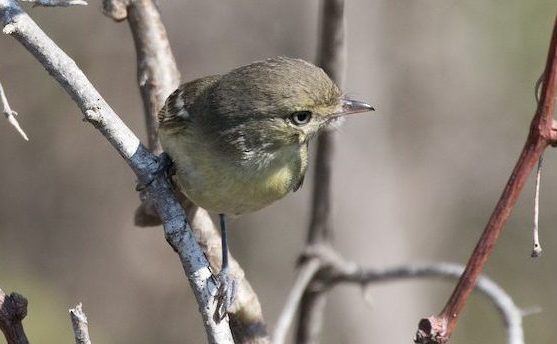
Flat-billed Vireo, showing the broad base and triangular shape of the bill. (La Placa, Dominican Republic; April 3, 2017.) © Robert Lewis
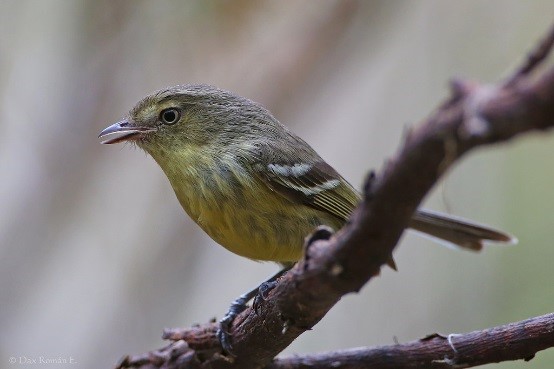
Flat-billed Vireo, showing the partial eyebrow and peculiarly broad, flattened head shape. (Sierra de Bahoruco, Dominican Republic; April 12, 2014.) © Dax M. Román E.
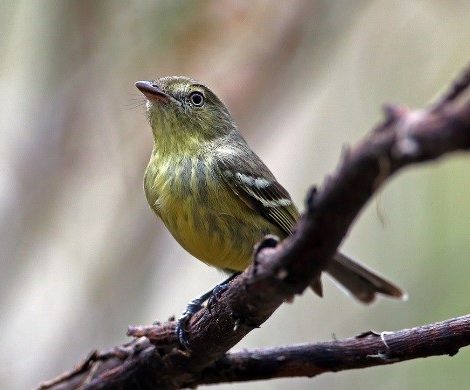
Flat-billed Vireo, showing streaked underparts. (Sierra de Bahoruco, Dominican Republic; April 12, 2014.) © Dax M. Román E.
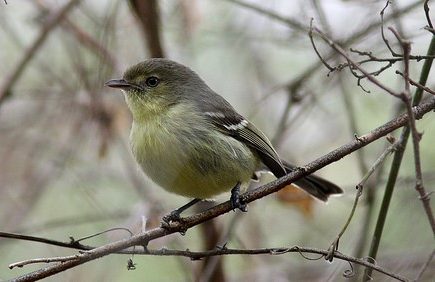
Flat-billed Vireo, with underparts appearing unstreaked. Note the down-turned gape. (Rabo de Gato Trail, Dominican Republic; March 10, 2014.) © Jim Tietz
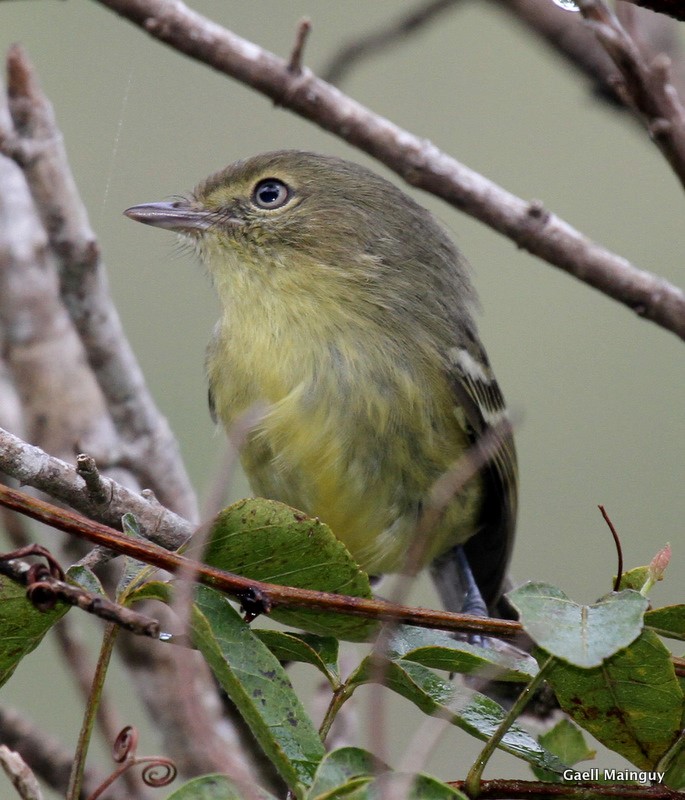
Flat-billed Vireo. (Barahona, Dominican Republic; December 12, 2010.) © Gaëll Mainguy
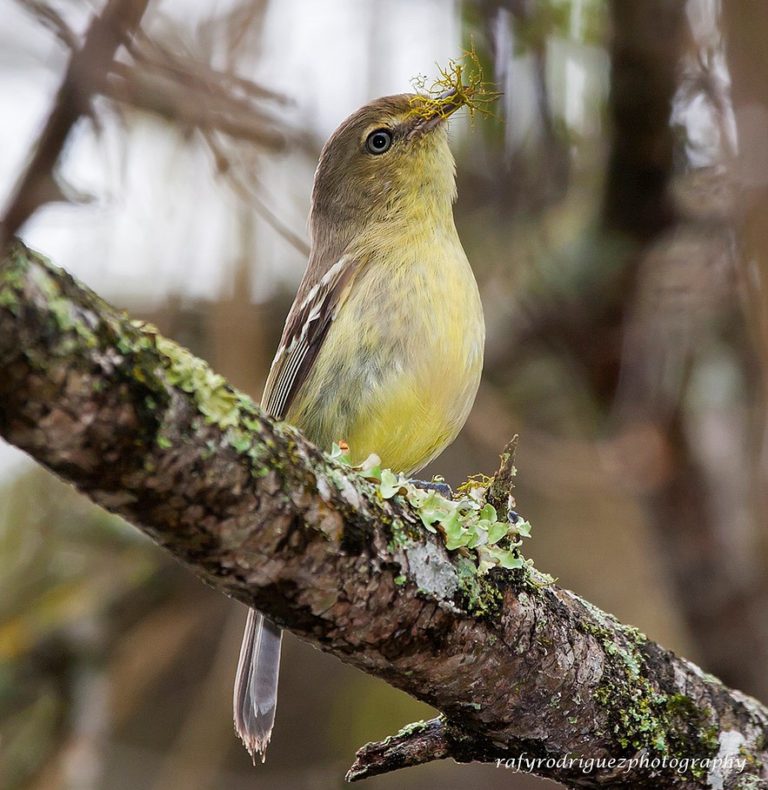
Flat-billed Vireo, with nesting material. (Alcoa Road, Dominican Republic; April 11, 2006.) © Rafy Rodriguez
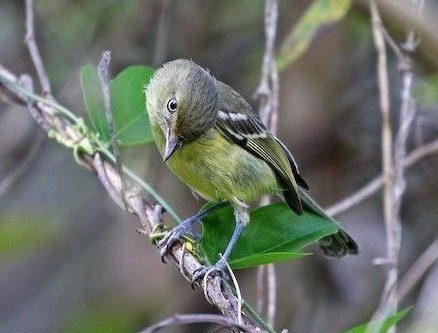
Flat-billed Vireo, showing fine dark streaks on its crown. (Alcoa Road, Dominican Republic; February 13, 2016.) © Andrew Spencer
Cf. Thick-billed Vireo. Flat-billed and Thick-billed Vireos occur close to one another in northern Haiti, separated by five miles of ocean. Plumages of the two species can be similar, especially as Thick-billed is highly variable. Both have yellow supraloral bars and partial eyerings—though Flat-billed has a short eyebrow, whereas Thick-billed’s eyering is broken above the eye. Thick-billed has dark eyes and a dark gray bill, whereas Flat-billed typically has pale irises and a partly pinkish bill.
Notes
Monotypic species. Sometimes placed in its own monotypic genus, Lawrencia.
References
Brewer, D. 2018. Flat-billed Vireo (Vireo nanus). In Handbook of the Birds of the World Alive (J. del Hoyo, A. Elliott, J. Sargatal, D.A. Christie and E. de Juana, eds.). Lynx Edicions, Barcelona. https://www.hbw.com/node/61249. (Accessed November 15, 2018.)
eBird. 2018. eBird: An online database of bird distribution and abundance. Cornell Lab of Ornithology, Ithaca, N.Y. http://www.ebird.org. (Accessed November 15, 2018.)
Latta, S., C. Rimmer, A. Keith, J. Wiley, H. Raffaele, K. McFarland, and E. Fernandez. 2006. Birds of the Dominican Republic and Haiti. Princeton University Press, Princeton, N.J.
Raffaele, H., J. Wiley, O. Garrido, A. Keith, and J. Raffaele. 1998. A Guide to the Birds of the West Indies. Princeton University Press, Princeton, N.J.
